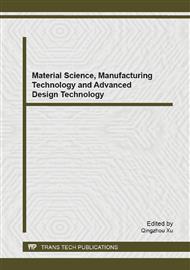[1]
Andersen, P. K. and Gill, R. D., Cox's regression model for counting process: a large sample study, Annals of statistics vol. 10(1982), 1100-1120.
Google Scholar
[2]
Andersen, P. K., Borgan, Gill, R. D. and Keiding, N., Statistical Models Based on Counting Processes, Spring, New York, (1993).
DOI: 10.1007/978-1-4612-4348-9
Google Scholar
[3]
Chen, Y. Q. and Jewell, N. P., On a general class of semi-parametric hazards regression models, Biometrika vol. 88(2001), 687-702.
DOI: 10.1093/biomet/88.3.687
Google Scholar
[4]
Chen, Y.Q. and Wang, M. C., Analysis of accelerated hazard model, Journal of the American Statistical Association vol. 95(2000), 608-618.
Google Scholar
[5]
Cox, D. R., Regression models and life-table (with Discussion). J. R. Statist. Soc. B 34 (1972), 187-220.
Google Scholar
[6]
Ghosh, D., Accelerated rates regression models for recurrent failure data, Lifetime Data Analysis, 10(2004), 247-261.
DOI: 10.1023/b:lida.0000036391.87081.e3
Google Scholar
[7]
Kalbfleisch, J. D. and Prentice, R. L., The statistical analysis of failure time data, Wiley: New York, 2nd Edition, (2002).
Google Scholar
[8]
Lin, D. Y. and Ying, Z., Semi-parametric analysis of general additive-multiplicative hazard models for counting processes. Ann. Statist. 23(1995), 1712-1734.
DOI: 10.1214/aos/1176324320
Google Scholar
[9]
pollard, D., Empirical Processes: Theory and Applications. IMS: Hayward, (1990).
Google Scholar
[10]
Sun, L. and Su, B., A class of accelerated means regression models for recurreent event data, Lifetime data Anal, 14(3) (2008), 357-375.
DOI: 10.1007/s10985-008-9087-z
Google Scholar
[11]
Tian, L., On the accelerated failure time model for current status and interval censored data, Biometrika vol. 93(2006), 329-342.
DOI: 10.1093/biomet/93.2.329
Google Scholar


